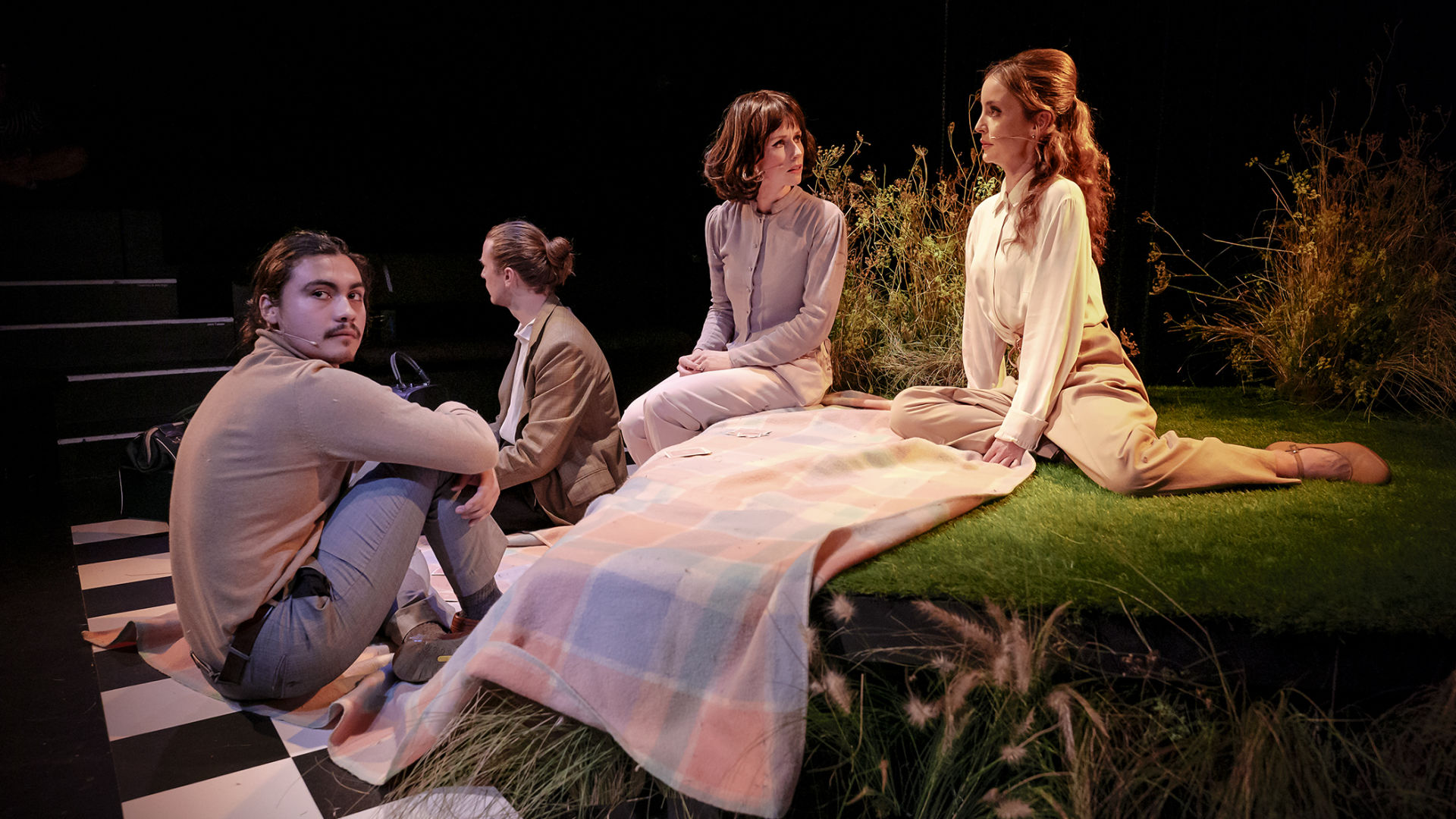Vertigo editors Ashley Sullivan and Joseph Hathaway-Wilson review the latest instalment of Belvoir St Theatre’s 25A Theatre program. The program challenges artists to produce a play with a budget of $1,500. All profits from ticket sales go to the artists.
We entered Destroy, She Said with scarce experience of independent theatre. As far as the medium goes, we are both admittedly mainstream, rarely straying far from the fun-albeit-mind-numbingly-accessible musicals of the Capitol and Lyric theatres.
Granted you share a comparable theatre-going record; we ask you heed this notice before venturing any further into our review, for if anything can best summarise our experience of this production, it is this:
DESTROY, SHE SAID IS A WORK OF ABSURDIST THEATRE.
Take that warning as you will — so long as you know that we said it, and you can no longer say we didn’t warn you. Now, let us continue.
Destroy, She Said is performed in the Downstairs Theatre, a tiny space in which three rows of seating overlook a minuscule stage. The set consists of a small patch of AstroTurf, a reclining garden chair, two vintage lamps and a rotary telephone, not to mention a scattered array of twigs and branches on the sides (y’know, independent theatre things).
The play is set in a nondescript hotel beside a nondescript forest (The Lobster, anyone?), focusing on Elizabeth (Grace Smibert), a young-ish woman consumed by grief, and her encounters with fellow guests, Max (Andreas Lohmeyer) and Stein (Gabriel Alvarado). Once Max's wife, Alissa (Adrianne Daff), arrives, the story grows simultaneously abstract and intense as the four engage in uncomfortably minimalist conversation. Undertones of insanity and lust creep in, framing what we can only assume to be a broader discourse around womanhood and the mundanity of marriage (or monogamy… Maybe both?).
That being said, any criticism concerning the social or cultural relevance of the play should be levied not at the practitioners who staged it, but at the Belvoir St Theatre board for selecting it.
When Samuel Beckett’s Waiting for Godot premiered at the Théâtre de Babylone in 1953, it was riding the wave of an increasingly prominent postmodern zeitgeist in a world still reeling from the horrors of warfare and genocide, while coming to terms with the prospect of nuclear war.
While it would be ignorant to say that the Theatre of the Absurd has only ever possessed meaning in the post-war era, it is definitely an odd fit among the present-day catalogue of unabashedly didactic political texts, each intent on highlighting the obscenity of race-relations, the patriarchy, and climate inaction.
For what it is, however, the cast and crew of Destroy, She Said execute their task magnificently. The recurring use of strobe lighting transforms the space into a shapeless void, much akin to Elizabeth’s psyche. The mechanical dialogue, uncomfortable at first, feels more naturalistic as the play progresses. For a genre devised with the intent of testing the tolerance of its audience, there is something oddly captivating about this experience.


 -
-